Welcome to The Bilas Index, Volume I, the first iteration of TBI in 2022.
As you know, TBI is the greatest and most comprehensive evaluation of basketball accomplishment and predictive measure of future performance known to mankind, and perhaps beyond. TBI is compiled from a careful evaluation of detailed data analytics and on-court scouting of actual game performances, not just results. All of this quality information is analyzed and sorted by the most powerful and accurate mind the game has ever known, the vast gray matter of The Bilastrator, whose basketball intellect and grasp of the game are unmatched by any collection of humans or machines. The only thing that can match the awesome power of The Bilastrator’s basketball intellect is his stunning humility despite such awesome proficiency.
Early returns on the 2021-22 college basketball season have been mixed, but largely in a good way. We have seen some truly outstanding team performances, some stunning upsets and some ridiculously good individual performances. We have also seen some disappointments, with highly regarded teams underperforming early. That is the usual roller coaster we expect in college hoops.
Baylor endured tremendous personnel losses after steamrolling to the 2021 national championship, yet the Bears have been dominant on defense and have won their first 13 games. Kentucky’s Oscar Tshiebwe has grabbed every available rebound this season, with multiple 20-rebound games, including 28 against Western Kentucky. Tsheibwe outrebounded the Hilltoppers by himself, 28-27. Alabama was magnificent in beating Gonzaga, yet also lost to Iona and Davidson, potential early round opponents in the NCAA tournament.
Ohio State’s E.J. Liddell, Gonzaga’s Drew Timme, and Iowa’s Keegan Murray are having All-America seasons. SMU’s Kendric Davis, Utah State’s Justin Bean, San Francisco’s Jamaree Bouyea, Wake Forest’s Alondes Williams and BYU’s Alex Barcello are having spectacular seasons out of the media spotlight. Duke’s Paolo Banchero, Gonzaga’s Chet Holmgren and Auburn’s Jabari Smith have lived up to the hype, and will compete for a Final Four and the top pick in the 2022 NBA draft.
SEC basketball is deeper in quality teams that can compete for a championship than SEC football. And on the negative side, the game is again navigating disruption from the pandemic. With any good fortune, the major disruptions will taper off by the end of January. Let’s hope so.
Lastly, before getting to TBI, let us all have a somber and respectful moment of silence, taking some time in silent contemplation to reflect upon a tragic death affecting the game of college basketball: the tragic death of freedom of movement.
Yes, freedom of movement is dead. This season has been the most physical, foul-filled one of the past five, with basketball games devolving into hockey games. While those “in charge” continue to talk about officials being mandated to reduce physicality to create freedom of movement, the truth is, freedom of movement died a slow, painful death. Arm-bars on ball handlers, clear fouls on shooters near the basket, illegal hedging of ball screens, and illegal blowing up of dribble handoffs, among other things, are now being routinely allowed, and players are being required to play through it.
Move just a hair setting a screen on offense and it’s a foul, but throw your chest into a shooter and it routinely goes uncalled. And because such clear fouls are not being called by officials, coaches are teaching fouling techniques because they know they aren’t being called. This leads to a far more physical, plodding game overall. The work done by the entire college basketball landscape over the past few years to reduce illegal physicality and allow freedom of movement was for nothing. Very unfortunate. RIP, freedom of movement.
Yet, no matter how screwed up the administration of the game is, the players can overcome it with their competitive spirit, athleticism and skill. This game is about, and always has been about, players. With that in mind, here is The Bilas Index, Volume I. You’re welcome, America.
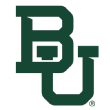
1. Baylor Bears
The Bears have been the biggest surprise of the 2021-22 season. The surprise is not that Baylor is really good, but that the Bears may actually be the nation’s best team. Remember, Baylor lost Davion Mitchell, MaCio Teague, Jared Butler and Mark Vital from the team that dominated Gonzaga in the national championship game. Yet Baylor has a suffocating defense (ask Villanova) and efficient offense (ask Michigan State), both ranked in the top five in the country. Those who were role players last season are headliners this season, and freshmen Kendall Brown and Jeremy Sochan are legit performers on the big stage.
Baylor is not going unbeaten this year — no team will. And Baylor will not keep the top spot in The Bilas Index all season long — no team will. But Baylor will challenge for it all again because of its team defense, established winning culture, collective servant leadership attitude, and its players who have sacrificed and developed together. Along with Gonzaga and Villanova, Baylor has been the most impressive riser in the past 20 years.

The Blue Devils are big news again, in part because of the last dance of Coach K, but also because of the ridiculous level of player talent in Durham. Paolo Banchero and Trevor Keels are the NBA-ready newcomers who have grabbed attention and headlines. But Duke’s best player has been Wendell Moore Jr., who has been leading Duke in scoring, leading the ACC in assists, and simply leading Duke with his high-level consistency. Duke has multiple handlers who can grab a rebound and bring the ball up without an outlet pass, and Duke has lineup options. Coach K can go big with Mark Williams and Theo John, or go small with A.J. Griffin and Banchero playing up front. Duke is still young in spots, which showed a bit at Ohio State, but very capable.
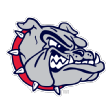
Yet again, Gonzaga is loaded and will compete for a Final Four. Like last season, Gonzaga is among the elite passing and cutting teams in the country, and the Zags are getting layups like nobody’s business. Gonzaga leads the nation in 2-point field goal percentage, hitting almost 63% of its shots inside the arc. Part of that is Drew Timme’s excellence around the goal, and part of it is “next level” back cuts, second cuts and vertical cuts that are so hard for defenses to guard. The Zags also defend well, with Chet Holmgren blocking shots and rebounding and Julian Strawther among the most improved players in the country. Gonzaga can beat anybody, but this is not a great perimeter shooting team, and its free throw shooting (69.4%) can be much better.

The Jayhawks program is ridiculously impressive. While Kansas does not have the NBA draft talent of past seasons, it has seasoned vets who have improved and are willing to fight. Chief among that crew are Ochai Agbaji and Christian Braun. Few have put up better seasons to date than Agbaji, who has been efficient and consistent at the highest level, averaging over 20 points and shooting over 46% from deep. Braun has been in attack mode all season and leads Kansas in rebounding, blocked shots and steals. Kansas can score — the only question is whether the Jayhawks’ defense is championship worthy.

Purdue could have made a legitimate claim as the very best team in college basketball before Monday night’s surprising loss to Wisconsin at Mackey Arena, a defeat that dropped the Boilermakers to 1-2 in the Big Ten. In spite of the loss, the first thing that stands out about Purdue is its sheer size. No team can match the combo of Zach Edey and Trevion Williams, both incredibly effective players. Edey (24 points vs. Wisconsin) is a giant with improved skill, while Williams is a productive star who can score, rebound and pass at a high level. Yet that size is complemented by skill and athleticism at every other spot. Jaden Ivey is a first-team All-America-caliber wing and a lottery pick. Purdue can really shoot the ball, as well. Ivey, Sasha Stefanovic, Brandon Newman and Isaiah Thompson have each hit over 20 3s in this young season, and Purdue is shooting over 41% from deep as a team. If the Boilermakers continue to improve defensively — Wisconsin shot 45% and committed just seven turnovers on Monday — they could rejoin the conversation as the nation’s best team.
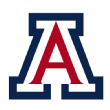
The most impressive first-year coaching performance has been from Tommy Lloyd, who has already established a new way of playing at Arizona, and has brought a Euro-style flair to Tucson. Like Gonzaga, the Wildcats are a very good passing and cutting team, and one that pushes the ball up court quickly and attacks before the defense can get set and organized. Arizona has an average possession length of just 14 seconds, which is the fastest pace in the nation. Why? Because Arizona gets better shots early in the clock than it can get later and beats opponents with pace.
Can that pace result in a deep tournament run? Well, it is easier to slow a game down than speed one up, and Tennessee was able to slow Arizona’s pace, but the Wildcats can definitely advance with this style and this personnel. The only downside is perimeter shooting. Arizona is not a knockdown perimeter shooting team, but Bennedict Mathurin and Kerr Kriisa can shoot it. Mathurin is a lottery pick and among the nation’s best players.
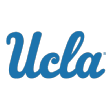
7. UCLA Bruins
The Bruins are 8-1 yet seem like an afterthought in the national title picture. That is simply wrong. UCLA is a Final Four program that has one slip-up: a beating at the hands of Gonzaga in Las Vegas. UCLA needs better production out of its interior and needs to get shots for the right people. Johnny Juzang, Jules Bernard, Tyger Campbell, David Singleton and Jaime Jaquez Jr., are a combined 74-for-174 from deep, a collective 43%. Meanwhile, Jaylen Clark and Peyton Watson are a combined 1-for-17 from deep. Despite the needed improvements, UCLA is still dangerous and a contender.
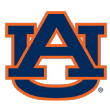
Bruce Pearl has the best team in the SEC, and the SEC is the best and deepest conference in the country this year. The Tigers defend at a high level, and Walker Kessler has proved to be the nation’s best shot-blocker and rim protector, with a triple-double against LSU. The Tigers’ most talented player is Jabari Smith, the 6-foot-10, smooth and talented jump shooter who will vie for the No. 1 overall selection in the NBA draft. Smith can do things few others can, and as soon as he becomes more attack-oriented off the bounce, he will be nearly unstoppable. And with Allen Flanigan back from injury, Auburn is becoming a more complete team.
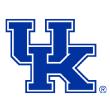
The Wildcats are very good and have significant room to get better. When you play Kentucky, the keys are transition defense and rebounding. Sahvir Wheeler is among the nation’s assist leaders, and he pushes the ball up court as quickly as anyone. And as long as Kentucky gets a shot up without turning it over, Oscar Tshiebwe will go and get it. Kentucky is the No. 1 offensive rebounding team in the country, grabbing over 43% of its own misses. The one area that Kentucky does not excel in is getting to the foul line. This is a better free throw shooting team, by percentage, than John Calipari has had in a while, but Kentucky is not getting to the line often.
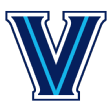
Few have played as challenging a schedule as Villanova. The Wildcats have played at UCLA, Baylor, Seton Hall and Creighton, and have also faced Tennessee, Purdue and Xavier. There have been no breathers for Villanova to pad its schedule, yet the Wildcats have proved to be another second-weekend team. Villanova is just so damn efficient with the ball. Low turnover rate, playing off two feet on penetration, then spraying it out to open shooters who are very good from deep. Villanova takes almost half of it shots from 3-point range, and Collin Gillespie, Justin Moore and Brandon Slater make this team really difficult to defend. The question for Villanova is size. When playing much bigger front lines, will Villanova be able to hang on the glass and in the paint?

11. USC Trojans
One of the truly unsung programs in the country is Southern California. Some of that underrated nature is understandable, but not after an Elite Eight run. The Trojans are unbeaten, but don’t yet have a signature win. USC has defended very well, protecting the lane and the rim, but has not proven to be a great shooting team. Isaiah Mobley has been USC’s best and most consistent player, but the one thing that can hold USC back is free throw shooting. The Trojans shoot only 59% from the line as a team. That has to improve.
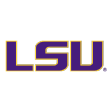
12. LSU Tigers
The Tigers can defend. This is an explosive team that can press, pressure, challenge and disrupt. LSU can turn you over, take the ball from you and block your shot with superior depth and length. LSU is highly ranked because of its defense, which is No. 1 in the county. However, the LSU offense is not good or efficient. The Tigers do not shoot the ball well at all, hitting only 31% from deep, but are a solid offensive rebounding team. The question is, will LSU’s offense improve to help its defense? There are no shutouts in basketball, and the offensive difficulties were apparent in the loss at Auburn.
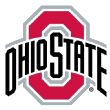
The Buckeyes have excellent potential for growth. This is a very good offensive team with a true star in E.J. Liddell. Perhaps with the exception of Iowa’s Keegan Murray, nobody is having a better season in a quieter fashion that Liddell. He is legit. When the Bucks get Justice Sueing back and healthy, they will have another versatile threat who gets to the foul line. Key for this team will be defensive improvement and the development of Malaki Branham, a long-armed freshman who has star potential, as evidenced against his 35-point game against Nebraska.
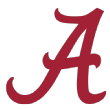
The Crimson Tide have proven to be a bit of a puzzle. Wins over Gonzaga, Tennessee and a full-strength Houston signaled a contender. But losses to very good Iona and Davidson teams make Alabama look less so. Yet, it would be a mistake to dismiss such a talented and capable team. Alabama’s guards are really good, led by Jahvon Quinerly, JD Davison and Keon Ellis. Davison is explosive and super talented, but needs to be better with the ball. As Alabama’s defense goes (and improves), so will the Tide.

Hopes were high for the Spartans out of the gate, but early turnover problems caused major concerns. Tom Izzo called those issues “sickening” to me at a Michigan State practice in December. Yet, the improvement of Tyson Walker at the point gives Michigan State real hope of overcoming its only real obstacle … taking better care of the ball. Walker and A.J. Hoggard are both high-assist point guards, but they both have a 25% turnover rate. That is far too high. Gabe Brown and Marcus Bingham Jr. are having great seasons, and Max Christie is an outstanding freshman wing. When, and not if, Joey Hauser begins playing more like the Joey Hauser everyone knows he can be, Michigan State will challenge in the Big Ten.
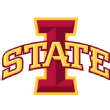
The Cyclones are conclusive proof that rebuilding is not a long-term task anymore. The transfer portal has been very effective for T.J. Otzelberger and his staff, who put together a talented group that plays hard and selfless basketball, and Izaiah Brockington, Tristan Enaruna and Gabe Kalscheur have been quality additions to a team that could not win at all last season. This Iowa State team really guards you and plays incredibly hard on the defensive end.
The challenge for Iowa State will be for the offense to help its outstanding defense by taking better care of the ball. Iowa State turns the ball over at a 20% rate as a team, and has proven to be an average perimeter-shooting team. Iowa State’s offense is ranked outside the top 125 in the country in efficiency. That is not a long-term trend that can continue. Yet, the defense put Iowa State in a position to challenge Baylor, and will make Iowa State an NCAA tournament team.
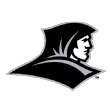
The Friars are really good. Providence is 13-1 after 14 games, with wins over a short-handed Wisconsin, Texas Tech, UConn, Seton Hall and DePaul. Nate Watson, Al Durham and Noah Horchler lead this solid team, and nobody should be surprised to see the Friars in the Sweet 16. Providence is physical, and does a great job of getting to the foul line. That will serve Ed Cooley’s squad well in the Big East wars, which the officials have allowed to be as physical as hockey games early in the season.

18. Texas Longhorns
The Longhorns have talent and depth, and need only experience together to be the team most expected them to be from the jump. The schedule has not been challenging, save for losses against Gonzaga and Seton Hall. The win over West Virginia looks impressive, but the Mountaineers were without Taz Sherman, which takes a bit away from it. Texas has multiple scoring options, and the arrival of a healthy Dylan Disu adds another dimension. Texas has defended very well, and the offense is coming. The ceiling is high for Texas.

The Vols are a different team this year. More dynamic and more perimeter-oriented, Tennessee is shooting more 3s and getting out in transition more often than in past seasons. Tennessee’s greatest strength is still its willingness to compete so hard on the defensive end, but with Kennedy Chandler running the point and Santiago Vescovi as a second point guard who moves effectively without the ball, the Vols are a better scoring team. When Victor Bailey Jr. and Josiah-Jordan James start to shoot the ball better, Tennessee will become even more dangerous. The loss to Alabama may look like a loss, but Tennessee was right there without Chandler or John Fulkerson, both out because of COVID-19 protocols.

The Illini would be much higher in these rankings with a healthy Andre Curbelo in the lineup, which would make ball security less of an issue. Right now, the Illini are turning the ball over at a 22% clip, which ranks in the bottom third of Division I. When you turn it over, one of the most dominant players in the game in Kofi Cockburn can’t get a touch and cannot go after an offensive rebound, a strength of his. Illinois ranks second behind Kentucky in offensive rebounding … so get a shot up every time down!

I have a ton of respect for this Xavier team. The Musketeers have talent and depth, and will be a factor in Big East play and beyond. Xavier has multiple threats who can get 25 points in a game, and if Xavier takes better care of the ball, this is a second-weekend-caliber team. Paul Scruggs is an unsung star who has tremendous versatility, and Adam Kunkel, Dwon Odom, Nate Johnson and Colby Jones can all make plays. With Iowa transfer Jack Nunge now healthy, and the return of Zach Freemantle, Xavier is a threat.

The Rams lead the nation in effective field goal percentage at 61%, and this is one of the better shooting teams in the country. Niko Medved has a pair of star performers in undersized forward David Roddy and guard Isaiah Stevens. Roddy is efficient inside and out, averaging over 20 points and nearly eight rebounds, while Stevens is a high-assist, low-error handler who averages 14 points, 7.3 assists and just 1.5 turnovers. The Rams have been in COVID pause since December but should pick up where they left off.

Don’t be fooled by the Pirates’ 0-2 start in Big East play. Seton Hall has been without Tyrese Samuel and Ike Obiagu because of COVID protocols, and is playing short-handed in the frontcourt. The Pirates can’t even practice right now, but rest assured, they can play. Jared Rhoden is an NBA-caliber player who leads Seton Hall in scoring, rebounding and steals, and gets to the free throw line over six times per game.

24. Iowa Hawkeyes
The story of the Hawkeyes begins and ends with Keegan Murray. After the team lost Luka Garza, Murray has blossomed. The multidimensional Murray was known as a great defender and rebounder, but he now leads the Big Ten in scoring at 24.5 points per game, while grabbing 8.2 rebounds per game and shooting 59% from the floor and 82% from the foul line. Murray is an NBA first-rounder, and the most improved player in the country.

25. UConn Huskies
The Huskies are on a COVID pause, but are still capable of some very good things upon their return. UConn has all-conference talent at multiple positions, including wing Tyrese Martin, guard R.J. Cole, and big man Adama Sanogo. Dan Hurley has quality depth and options, as well — Andre Jackson, Isaiah Whaley, Jalen Gaffney and Jordan Hawkins are all capable scorers and contributors. UConn has the personnel to take the next step and win in the postseason.

26. Mississippi State Bulldogs
The Bulldogs got off to a nice start in SEC play with a decisive victory over Arkansas in Starkville. Ben Howland’s team has a chance to get hot, especially if big man Tolu Smith (18 points, 6 rebounds, 5 steals vs. the Razorbacks) can stay healthy after missing time with a broken toe. Iverson Molinar is one of the nation’s underrated guards, a player who can get to the line and convert (88.9% on the season) once he gets there.
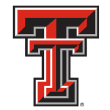
Mark Adams’ group is still something of a mystery team, but an overtime win over Tennessee at Madison Square Garden in December is evidence that this team is going to be a tough out in the Big 12. The Red Raiders really get after it on the boards, with an offensive rebound percentage (40.1%) that ranks top-5 in the entire country.
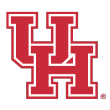
28. Houston Cougars
The losses of Marcus Sasser and Tramon Mark for the season will limit Houston this season. This was a potential top-10 team at full strength, but losing a dynamic scorer like Sasser cannot be replaced. But, all is not lost for Houston. The focus may shift to more interior play, getting the ball in to Josh Carlton and Fabian White Jr. more often. Houston will still be a tough team to beat because the Cougars play so hard and defend at such a high level. Losing Sasser and Mark is a gut punch.
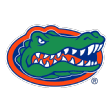
29. Florida Gators
An unsightly loss to Texas Southern will continue to elicit some caution when it comes to the Gators. Still, this is a team with some quality wins (Ohio State, Florida State) and plenty of time to find itself. Colin Castleton is one of the best seniors in college basketball, a consistent double-double threat who is a matchup problem at 6-11, 240 pounds.

The Badgers were supposed to be a young work-in-progress. They’ve arrived ahead of schedule — Monday’s win at Purdue is as good a road victory as you’ll see in the Big Ten — and Johnny Davis is the primary reason why. Davis (37 points, 14 rebounds vs. Purdue) is a 6-5 wing who can do it all and has developed into a legitimate All-America candidate. Brad Davison is a fifth-year senior who can score and defend. The one thing Greg Gard’s group doesn’t do especially well is shoot the 3 — they’re right around 30% from beyond the arc — but if you weren’t paying attention on Monday, Wisconsin can play with any team in the country.
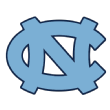
If you’ve written the Heels off after they struggled against Kentucky in Las Vegas, you’ve done so at your own peril. This is a really talented group that is still coming together under Hubert Davis, but shoots it extremely well from the perimeter (40% from 3, top-10 in the nation) and has a unique paint presence with Armando Bacot (four straight double-doubles).

Michigan’s struggles this season aren’t about one thing, but keep in mind that this is a far less experienced team than the one that was among the oldest groups in college basketball in 2020-21. Hunter Dickinson and DeVante’ Jones are proven and are going to be fine. Once freshmen Caleb Houstan and Moussa Diabate get more comfortable, Juwan Howard’s squad can be extremely dangerous.

The Ramblers haven’t played since Dec. 10 because of COVID cancellations, but remain a quietly impressive 9-2 — with the only losses coming by single digits to Michigan State and Auburn. Drew Valentine has done a nice job with a team that shoots it well from the perimeter — 41.8% from 3, a top-5 figure nationally. Lucas Williamson is a fifth-year senior and a really good one.

34. West Virginia Mountaineers
The Mountaineers were without top player Taz Sherman, along with contributors Gabe Osabuohien and Kobe Johnson, for their Big 12 opener against Texas because of COVID-19 protocols. WVU predictably lost that game. Bob Huggins’ group is much tougher at full strength, though its work at the free throw line (63.2% on the season) must improve soon.

35. Indiana Hoosiers
The Hoosiers are an NCAA tournament team in Year 1 under Mike Woodson, and there aren’t many in the country who can defend Trayce Jackson-Davis when he gets going. IU has lacked a consistent No. 2 scorer, but Race Thompson has been really good around the basket (he’s made 20 of his last 22 shots from inside the arc) and can be a complement.
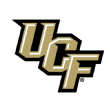
36. UCF Knights
Johnny Dawkins’ crew got the nation’s attention when they went on a second-half tear to take down Michigan on Dec. 30. The Knights aren’t going to be able to count on guards Darin Green Jr. and Brandon Mahan connecting on a combined 12 of 16 3s on most nights, as the duo did against the Wolverines, but they do shoot it well at all three levels and are going to be a difficult matchup in the American Athletic Conference for that reason.

37. Oklahoma Sooners
Porter Moser has collected some quality wins in his first season in Norman (Arkansas, Florida, UCF), and the Sooners’ meeting with Baylor on Tuesday night in Waco ought to be a good gauge of OU’s ceiling. Most opponents will focus on Eastern Washington transfer and leading scorer Tanner Groves, but don’t lose sight of how incredible senior Jalen Hill has been around the basket. The 6-foot-6, 218-pound Hill has made an astounding 40 of his 51 2-point attempts (78.4%) for one of the best-shooting teams in the country.

Creighton was not perceived as a Big East title contender entering the season, a status that changed after the Bluejays routed Villanova 79-59 in the Big East opener on Dec. 17. Greg McDermott and Co. will have an early chance to complete a home-and-home sweep this Wednesday on the Main Line. The play of newcomers Ryan Hawkins, Ryan Nembhard and Arthur Kaluma has been a revelation in Omaha, and Ryan Kalkbrenner is one of the nation’s unsung 7-footers.

39. Clemson Tigers
Game cancellations mean Clemson will have the rare chance to beat Virginia in back-to-back games on Tuesday night, after the Tigers went to Charlottesville and handled the Cavs (67-50) when we last saw them on Dec. 22. What Brad Brownell’s group lacks in star power, it makes up for in its ability to bury you from the perimeter — the Tigers shoot 41% from beyond the arc, a top-10 figure in all of Division I.

40. BYU Cougars
The Cougars have not been perfect — an overtime loss to Utah Valley on Dec. 1 lingers — but they own five victories over KenPom top-100 teams and are both experienced and tough. The season-ending knee injury suffered by Gavin Baxter against UVU hurts, but Mark Pope’s group is still dominated by seniors, including Alex Barcello, Gideon George and Te’Jon Lucas.

The Hokies are just 3-5 in their last eight games but are about to embark on a stretch where they should be able to get right, starting with a scheduled matchup against NC State in Blacksburg on Tuesday night. Keve Aluma remains one of the ACC’s most dynamic players — he went for 25 points and 10 rebounds against Duke on Dec. 22 — but Tech is not very deep, and that is going to be an issue when opponents turn up the tempo.

In what has been a banner season thus far for the West Coast Conference, don’t forget about the 13-1 Dons. How good is Todd Golden’s team? We should find out Thursday night, when USF is scheduled to face Gonzaga in Spokane. Point guard Jamaree Bouyea is playing like the fifth-year senior he is, getting to the bucket, distributing the ball and burning opponents who leave him open from the arc (42% from 3).

43. Wyoming Cowboys
The Cowboys acquitted themselves well in the Rainbow Classic, taking down Northern Iowa and South Florida and narrowly losing to Stanford. This team has a couple of really good players in forwards Graham Ike and Hunter Maldonado, and it also has the nation’s best steal percentage (5.8%) as conference play is set to begin.

Randy Bennett’s teams are always well-coached, and in an era when rosters have been transformed by (prudently) relaxed rules around transfers, the fact that the Gaels have some of the most continuity in the country has not hurt. Senior center Matthias Tass has reeled off eight consecutive double-digit scoring outings to help the cause.

Steve Forbes is a worthy national coach of the year candidate through the season’s first seven weeks, and despite a 1-2 start in ACC play, Wake has a chance to do some damage in a conference that is softer than usual near the middle. Oklahoma transfer Alondes Williams (double figures in every game this season) has been really good, but the Deacs need to be more consistent on the defense.
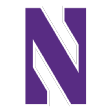
The Wildcats had Michigan State on the ropes in their first game of 2022 but couldn’t finish the job in a game that saw Chris Collins’ group struggle a bit more than usual from the perimeter (5-of-24 from 3). Northwestern is going to keep itself in games because it takes good care of the basketball (turnover percentage of 12.5% is third in all of Division I), and because Boo Buie can both score and distribute.

The schedule has not been overly challenging, but the early returns on the Ben Johnson era have been very positive. Transfers Jamison Battle (George Washington) and Payton Willis (Charleston) have helped fuel a surprising 10-1 start that includes wins over Michigan and Mississippi State. At some point the Gophers will need to get an offensive rebound — they currently rank dead last out of 358 Division I schools in offensive boards.
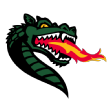
48. UAB Blazers
All but one of the Blazers’ 12 wins have come by double digits (they beat Saint Louis 77-72), and they’ve also had some pretty good near misses against the likes of West Virginia (65-59), San Francisco (63-61) and South Carolina (66-63). Winning close games in a top-heavy Conference USA should get easier as point guard and Tulane transfer Jordan Walker gets more comfortable.

49. TCU Horned Frogs
The Horned Frogs posted some decent wins in nonconference play — Texas A&M, Utah, Georgetown — but the schedule is about to get much tougher with Baylor arriving in Fort Worth on Saturday. Point guard Mike Miles opened eyes with strong performances in international competition over the summer and will be the key to TCU surviving the Big 12 gauntlet.

The Aztecs are always a factor in the Mountain West — the presence of Cal transfer Matt Bradley (14.9 PPG) ensures that will remain the case in 2021-22 — but Brian Dutcher’s crew must shoot it better to make a serious run. SDSU has shot it poorly across the board — 45.9% from 2, 32.2% from 3 and 65.3% from the line — and that’s not a long-term formula for success.

51. Iona Gaels
The win over Alabama was not a fluke. This is a really good team that can win a game (and possibly more than a game) in the NCAA tournament. Nelly Junior Joseph, a 6-9, 240-pound forward, tallied a double-double against the Crimson Tide and is the best player in the MAAC. Rick Pitino’s Gaels (top-10 nationally in free throw rate) do a great job of getting to the line.

52. SMU Mustangs
Houston’s injury issues and Memphis’ inconsistency leave a door open in the American, and the Mustangs are one of the teams that could walk right through it. Kendric Davis (21.5 PPG, 5.4 APG, 4.9 RPG) has been absolutely sensational for Tim Jankovich’s squad, and transfer brothers Michael Weathers and Marcus Weathers have been in enough big games to help SMU when it matters.
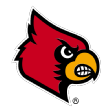
U of L endured Chris Mack’s suspension to start the season and has since shown some grit in outlasting NC State, Wake Forest and Georgia Tech to open the ACC portion of the campaign. Fifth-year senior Malik Williams has played like a guy who has been through the ACC wars, posting double-doubles against the Wolfpack and Yellow Jackets.

The Bearcats were perceived as a team that was a year away under first-year coach Wes Miller, but an early 20-point blowout of Illinois raised hopes immensely. Expectations have been tempered a bit since then, thanks to losses to Monmouth and Tulane, but there’s still a lot to recommend UC. The Bearcats value the basketball (top 20 nationally in turnover percentage), but they need to shoot it better from 3-point range (28.1%) and the line (65.8%).
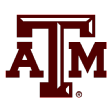
55. Texas A&M Aggies
This might be the year the Aggies turn the corner under Buzz Williams, and a strong start in a winnable four-game stretch to start the SEC season — at Georgia, vs. Arkansas, vs. Ole Miss, at Missouri — is going to be critical. A good sign for Williams is that veteran leaders, including wing Quenton Jackson, have played their best basketball against A&M’s highest-quality opponents.
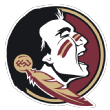
This has not looked like a signature Leonard Hamilton team so far, but Hamilton’s teams nearly always improve over the course of the season, and there is plenty of time for these Seminoles to do the same. Look out for freshman Matthew Cleveland, whose numbers haven’t jumped off the page but who put up a solid 13 points and nine rebounds in a road win at NC State on New Year’s Day.

The Wildcats own nine straight wins, including an eye-opening victory over Alabama on Dec. 21, as Atlantic 10 play is set to begin this week. The departure of 2,000-point scorer Kellan Grady to Kentucky was supposed to be an issue for this team, but players such as sharpshooting Michigan State transfer Foster Loyer (35 of 67 from 3, 52.2%) have helped Bob McKillop and Co. overcome that loss.

The Razorbacks have skidded to 3 losses in their past 4 games (including a worrying loss to Hofstra) heading into Tuesday’s date with Vanderbilt, though the most recent of those — a loss to Mississippi State on Dec. 29 — was played without leading scorer JD Notae (illness). Eric Musselman needs Pittsburgh transfer Au’Diese Toney, who has struggled to make an impact for most of the past month, to recover his fine early-season form.

The world had been waiting for Virginia to look like Virginia, and the Hoos’ 74-69 win over Syracuse at the Carrier Dome on New Year’s Day was a step in the right direction. (Also, a blowout of Providence in Newark on Nov. 23 is looking better and better). The Cavs are always going to defend, but their fatal flaw looks to be outside shooting — players not named Kihei Clark are a combined 54-186 (29%) from 3 on the season.
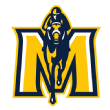
The headline in Murray State’s win over Memphis on Dec. 10 was the struggles of the Tigers, but more ink should have been devoted to the exploits of a really good Racers team. KJ Williams has been a key player in the middle, and guards Tevin Brown and Justice Hill (a combined 62-of-134 from 3, 46.3%) have been deadly from the perimeter.
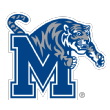
61. Memphis Tigers
The Tigers have shown glimpses of their Final Four talent — a rout of Alabama on Dec. 14 and a road beatdown of a quality Wichita State group on New Year’s Day among them — but the world continues to await a consistent stretch of basketball. For all the talk of Memphis’ talented freshmen, it’s telling that the team’s biggest wins have come when fifth-year senior DeAndre Williams has been more of the offensive focus.

The Aggies looked great during a 6-1 start that included wins over Oklahoma and Richmond, but a current 3-4 stretch of basketball — including a 49-47 loss at depleted Air Force during Christmas week — represents the first major challenge of the Ryan Odom era. Senior forward Justin Bean (19.8 PPG, 10.4 RPG) has been very good, but the team must be more consistent from the perimeter — USU was 1-of-19 from 3 against the Falcons.
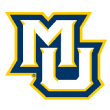
Shaka Smart immediately raised expectations in Year 1 by pummeling Illinois into submission and beating West Virginia early, but an 0-3 start to Big East play is perhaps a better representation of where this team is. Marquette is very young — NBA prospect Justin Lewis and longtime reserve wing Greg Elliott are the only current Golden Eagles who received significant minutes on last year’s squad. This team may look better on its second trip through the Big East.

Chris Jans’ NMSU teams are always a tough out — just ask good Davidson and Washington State teams that fell to the Aggies earlier this season. Nebraska transfer Teddy Allen has been an excellent addition, but the catalyst in NMSU’s biggest wins has been holdover Sir’Jabari Rice, who can score from every level of the floor.

The Bonnies are just 3-3 since rolling over Boise State, Clemson and Marquette in the Charleston Classic, but A-10 play should reveal more of the SBU team that looked like a legit top-25 team in the early going. Part of that dynamic will be getting more from NBA prospect Osun Osunniyi, who was limited to 18 points and eight rebounds combined in losses to UConn and Virginia Tech.

66. Belmont Bruins
Challenging Murray State for supremacy in the OVC will be Belmont, which has won five in a row as conference play begins this week. Big man Nick Muszynski (16.8 PPG, 6.3 RPG) and guard Grayson Murphy (8.0 PPG, 6.1 RPG, 5.8 APG) have been an effective inside-outside combo for the Bruins.
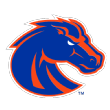
The Broncos will carry a seven-game winning streak into what should be a telling meeting against Colorado State in Boise on Friday, a game Leon Rice’s group is more than capable of winning. Senior forward Abu Kigab has been one of the Mountain West’s most effective players. BSU’s free throw issues (60.7%, 353rd in Division I) are worrying, however.
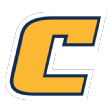
68. Chattanooga Mocs
The SoCon title race is annually one of the nation’s most intriguing, and Chattanooga is the early favorite as the league’s team to beat. Malachi Smith has been unstoppable at times for the Mocs, and former five-star recruit and Kansas player Silvio De Sousa has reemerged as a constant double-double threat in Chattanooga.
